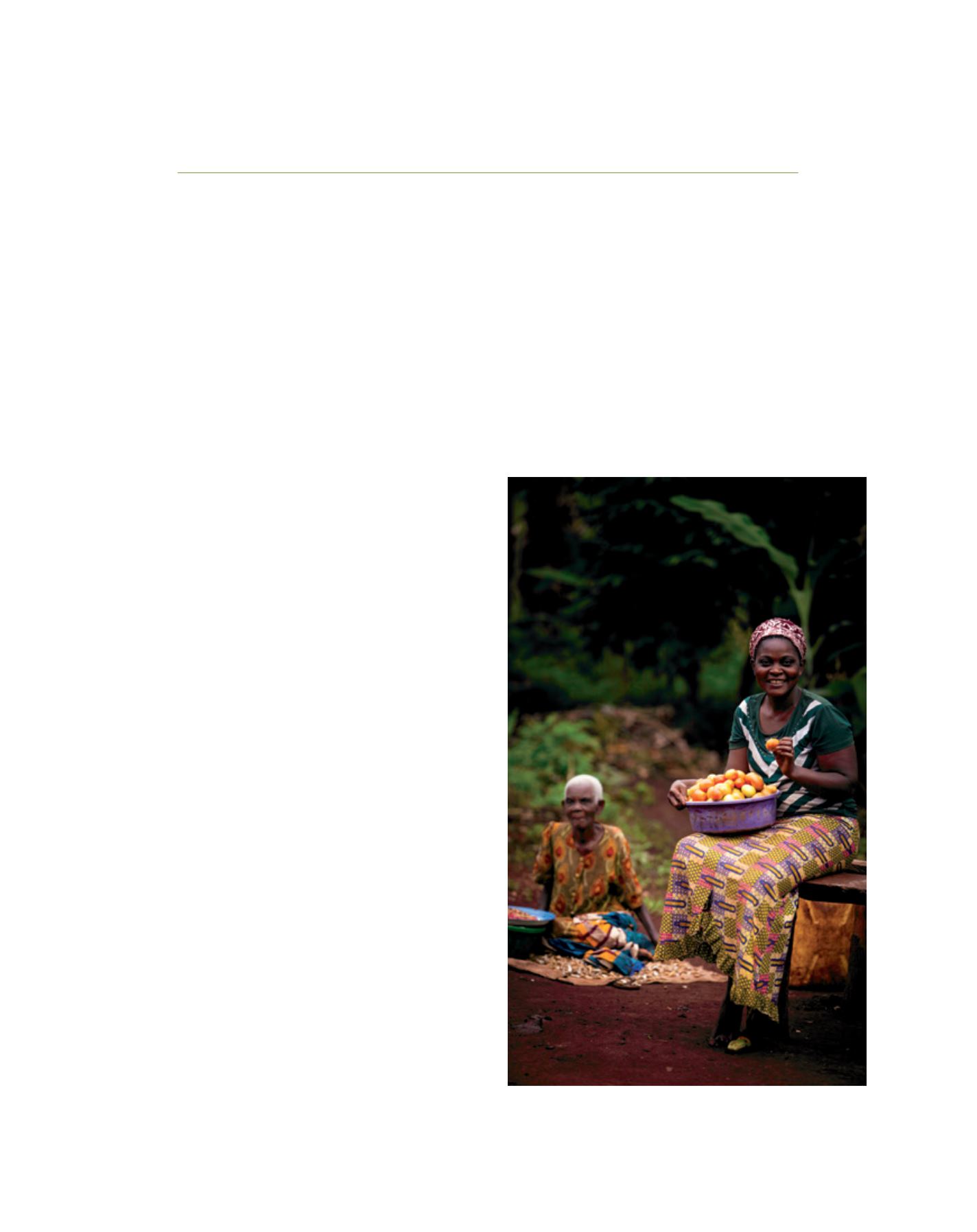

[
] 17
Family farming in sub-Saharan Africa
Professor Sam Moyo, Executive Director of the African Institute for Agrarian Studies, Harare, Zimbabwe
T
he persistent agrarian crisis facing sub-Saharan Africa
(SSA), and the recent world food price hikes, have
provoked greater urgency among governments, civil
society actors and multilateral development agencies to
identify public policies which can more speedily promote
agricultural transformation and food security and nutrition,
as well as rural development. Consequently, SSA states and
non-state actors have highlighted the important contribution
and strategic role of family farms in the region’s agrarian
transformation and socioeconomic development.
1
Since over 75 per cent of the SSA population is involved
directly and indirectly in small-scale farming and related
employment, family farms are pervasive in the economic
life of this largely agrarian region. Family farms generally
shape the social organization of life in a largely rural SSA,
and consequently play a key role in social protection. The
state of human development in SSA (such as poverty, food
security and gender relations) largely reflects the socioeco-
nomic fortunes of family farms. Furthermore, family farming
communities are a critical electoral constituency which shapes
political organization in SSA, even if their sociopolitical
importance is not reflected in public policy priorities.
Historical land alienation and integration into world
markets led to the extensive destruction of petty production
in a few SSA countries and the creation of a limited scale of
plantation enclaves in others.
2
Consequently, agrarian change
in SSA is characterized by a variety of accumulation paths,
3
including petty-commodity producers ‘from below’ and from
above, through large-scale commercial (capitalist) farms
(LSCFs) and corporate estates. However, struggles over the
control of land, led by independent movements and the peas-
antry since colonial times, resulted in the numerical and areal
predominance of various forms of family farming systems.
Conceptualizing family farms
Family farms comprise a diverse range of relatively small-sized
units, mainly involved in agricultural, pastoral and natural resource
management activities. Unlike other categories of farmers, they
are largely managed by and rely mainly on the labour of family
members, and produce for auto-consumption and sale. While
there is no official or legal definition of ‘family farming’ in SSA, the
terms ‘small-scale farmers’ or ‘smallholder famers’ are commonly
used by governments, civil society and scholars, while the term
‘peasantry’ is mainly used in scholarly literature. Conceptually
small-scale farmers are akin to small-scale family farms which
depend on family labour and produce a significant share of their
own food. However, ‘small-scale family farm’ is a relative term
which differentiates them from LSCFs, which are businesses
managed by family owners who hire most of their labour.
Historically, LSCFs mostly comprise European settlers found
in parts of Southern and Eastern Africa, as well as a scattering
of relatively new indigenous ‘emerging farmers’ with middle-
sized landholdings. Furthermore, LSCFs can be distinguished
from corporate farming ‘plantations’ or ‘estates’, which in SSA are
‘Janet Katushabe, displays tomatoes grown to boost immunity of her HIV/AIDS
positive daughters and herself’ (IYFF photo competition - Africa regional winner)
Image: Edward Echwalu
R
egional
P
erspectives
















